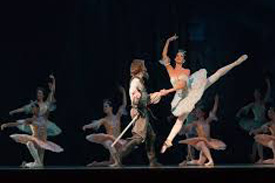 Melbourne Ballet Company marked its ten year anniversary this month with a contemporary ballet performance presented in Sydney. Choreographed by company director Simon Hoy with Tim Podesta and Lucas Jervies, the three choreographers took inspiration from German philosopher Heidegger and his views on existentialism, as well as their own behaviours and emotions. Sydney also saw Mara Galeazzi (former Principal with The Royal Ballet) and Joseph Phillips (formerly with American Ballet Theatre) perform. Melbourne Ballet Company’s 10th anniversary year will also see the company tour Australia and New Zealand. Continue reading Melbourne Ballet Company’s ten year anniversary
Melbourne Ballet Company marked its ten year anniversary this month with a contemporary ballet performance presented in Sydney. Choreographed by company director Simon Hoy with Tim Podesta and Lucas Jervies, the three choreographers took inspiration from German philosopher Heidegger and his views on existentialism, as well as their own behaviours and emotions. Sydney also saw Mara Galeazzi (former Principal with The Royal Ballet) and Joseph Phillips (formerly with American Ballet Theatre) perform. Melbourne Ballet Company’s 10th anniversary year will also see the company tour Australia and New Zealand. Continue reading Melbourne Ballet Company’s ten year anniversary
Category: Dancers
Joel Cooper – jump in and swing
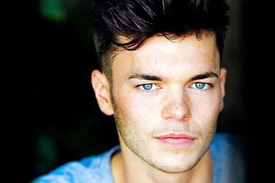 Training: Laine Theatre Arts (Graduated 2016, Distinction)
Training: Laine Theatre Arts (Graduated 2016, Distinction)
Theatre whilst training: ‘Mike’ in A Chorus Line; ‘Jojo’ in Seussical [LTA]
Theatre includes: Peter Pan [SECC Arena, Glasgow]; Cinderella [Grand Theatre, Wolverhampton]; Wicked International Tour
TV includes: The People’s Strictly [BBC Comic Relief]
Data-driven dancers’ health
 The Royal Ballet has recently committed itself to sharing its knowledge in caring for dancers, by partnering with the National Institute of Dance Medicine and Science. It’s support of the National Institute of Dance Medicine and Science means that one of its research projects that aims to gather injury and fitness data from dancers at the UK’s major companies and schools can move forward, in a data-driven approach to dancers’ health.
The Royal Ballet has recently committed itself to sharing its knowledge in caring for dancers, by partnering with the National Institute of Dance Medicine and Science. It’s support of the National Institute of Dance Medicine and Science means that one of its research projects that aims to gather injury and fitness data from dancers at the UK’s major companies and schools can move forward, in a data-driven approach to dancers’ health.
The project hopes to improve care for dancers’ health and wellbeing through this research, and as a result of the partnership The Royal Ballet will share learning from its system that uses specialist digital technology to track dancers’ injuries, health and day-to-day training, which it uses to inform its injury prevention strategies. As they work together it is hoped that the dance industry will better understand the vast breadth and depth of ‘injury’ across the wider dance sector. It is deemed as essential for the development of the industry.
The partnership between the ballet company and the National Institute of Dance Medicine and Science will strengthen the valuable work already done in this area, and will go on to further support the physical and psychological health and wellbeing of dancers around the world. The work has been welcomed by the founding partners of the National Institute of Dance Medicine and Science, including One Dance UK and Birmingham Royal Ballet’s Jerwood Centre for the Prevention and Treatment of Dance Injuries. The centre has already begun to align its injury surveillance methods with the Royal Ballet.
The National Institute of Dance Medicine and Science was founded in 2012 to share dance science expertise and provide information, guidance and access to healthcare services. Its other partners include the Royal National Orthopaedic Hospital, Trinity Laban Conservatoire of Music and Dance, the University of Birmingham and the University of Wolverhampton.
Birmingham Royal Ballet’s Cinderella Dreams
 Cinderella Dreams, which premiered on 20 February, was the culmination of a six month quest by Birmingham Royal Ballet to find the perfect fit for Cinderella’s jewelled slipper, in a production that brought to life big ballet aspirations of both young and old. The company searched the midlands area in order to stage this new production, which brought together talent from across the generations. In its aim to inspire and develop dancers from across the region, the production adapted David Bintley’s classic choreography to create a new and vibrant version of Cinderella.
Cinderella Dreams, which premiered on 20 February, was the culmination of a six month quest by Birmingham Royal Ballet to find the perfect fit for Cinderella’s jewelled slipper, in a production that brought to life big ballet aspirations of both young and old. The company searched the midlands area in order to stage this new production, which brought together talent from across the generations. In its aim to inspire and develop dancers from across the region, the production adapted David Bintley’s classic choreography to create a new and vibrant version of Cinderella.
Cinderella Dreams worked to showcase emerging talent from those aged eight to 76, working alongside dancers from Birmingham Royal Ballet. Over 150 dancers from the age of eight took part in open auditions in September 2016, and a final cast of 65 was selected, to experience the intensive training, rehearsal and eventually performance of a classical ballet. The production was in front of a full audience at the Birmingham Hippodrome, a hugely rewarding outcome for all involved.
The project was developed with the Department for Learning at Birmingham Royal Ballet, under the eye of Project Manager Rebecca Brookes. As a result, Cinderella Dreams has been an inspirational project for all involved, from the youngest to oldest dancers part of the production. There was a huge demonstration of talent, involving those who may not have ever had the chance to be involved in a professional ballet production. Whilst not without its challenges, Cinderella Dreams was a dream come true for many of the dancers involved.
Cinderella Dreams was the perfect production for all those who aspire to dance on the big stage; the benefits of dance are unbounded and this production was no different. As a charming and magnificent showcase, it demonstrated the breadth of dance talent across the area.
How to… improve your pirouettes
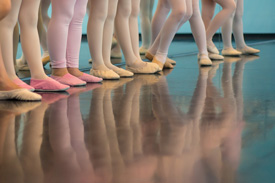 With a multitude of dance events and exhibitions taking place up and down the country this year, there is no end to the fun dancers can have attending and seeing what is on offer, be it shopping, browsing dance courses or taking part in pop-up classes.
With a multitude of dance events and exhibitions taking place up and down the country this year, there is no end to the fun dancers can have attending and seeing what is on offer, be it shopping, browsing dance courses or taking part in pop-up classes.
This year Dance Direct will be present at the Can You Dance? conventions, taking place in a number of cities throughout 2017. It is the biggest touring dance convention in the UK and will be visiting 10 different venues this year. There will be the opportunity to shop the great range Dance Direct stocks, but most exciting is the chance to win big in a pirouette competition! Show us how many pirouettes you can do at our stand, or post it on social media and tag @dancedirect, to be in with a chance of winning a Dance Direct goodie bag, full of lots of freebies!
It’s never too late to start practising: pirouettes are not always a dancers’ favourite part of class, but with a few tweaks you can drastically improve your technique and ensure you are spinning across the studio.
Often pirouettes can go slightly AWOL if a dancer does not have the strength to maintain their turns. A strong relevé onto demi-pointe and using the core to control your centre of gravity can do wonders for the number of turns you can achieve, and your recovery too. Starting at the barre before moving into the centre, practice snatching your working leg onto demi-pointe, and your other leg to retiré. With strength running through your arms too you’ll create a solid base for your turns.
Perhaps the most vital part of succeeding in your pirouettes is the use of your head, and spotting using a point in space ahead of you. Not only does this help you achieve multiple turns by the body following, but it also helps to prevent dizziness – you can then turn some more! Before you turn, decide how many pirouettes you will achieve. If you need a double pirouette then don’t change your mind halfway through – commit to your turns and use your head to whip round twice.
Keep your head up and your shoulders back, and you’ll sail round. Looking at the floor will only mean you will end up down there, and unless it is choreographed, it’s best to stay standing!
Misty Copeland – Disney Star
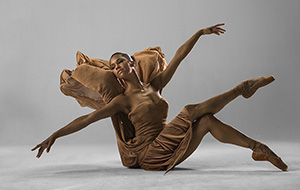 American Ballet Theatre principal Misty Copeland is set to star as the lead ballerina in the live-action version of The Nutcracker created by Disney. She is well on her way to becoming a household name with what might be her biggest job yet. Having already identified herself as accomplished in a number of balletic roles, this Nutcracker gig is not the first time Copeland has been on screen but is one of a kind for the ballerina.
American Ballet Theatre principal Misty Copeland is set to star as the lead ballerina in the live-action version of The Nutcracker created by Disney. She is well on her way to becoming a household name with what might be her biggest job yet. Having already identified herself as accomplished in a number of balletic roles, this Nutcracker gig is not the first time Copeland has been on screen but is one of a kind for the ballerina.
The film is entitled The Nutcracker and The Four Realms, directed by Lasse Hallström. Hallström’s filmography also includes titles such as The Cider House Rules, Chocolat, Hachi: A Dog’s Tale, and Salmon Fishing in the Yemen. Copeland is familiar with the role of Clara, dancing the part in Alexei Ratmansky’s production of The Nutcracker. She will be appearing in the film’s dance sequence however there is no word on who the choreographer may be just yet. Also unconfirmed is the release date for the film.
The Nutcracker and The Four Realms will be based on E.T.A. Hoffmann’s story “The Nutcracker and the Mouse King,” in which a young girl named Marie watches her toy nutcracker comes to life, fights the evil Mouse King, and is whisked off to a magical land filled with living dolls. The classic ballet, with its iconic score from Tchaikovsky, is based on that tale. It has been adapted for the big screen many times over the past few decades, most recently in 2009, with The Nutcracker in 3D.
Ahead of any filming or choreography schedules, Copeland is keeping herself very busy. Alongside dancing as a principal with American Ballet Theatre, this summer alone she is launching her own dancewear line, named Egal. She is also appearing in a Cosmopolitan magazine feature and even getting married.
Professional Dancer Line Up for Strictly 2016
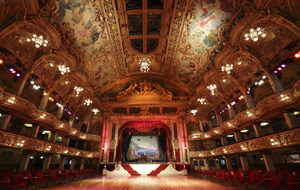 The BBC recently announced its professional dancer line up for the hit television show series Strictly Come Dancing 2016. A highlight of the dancing year for many, the series is always highly anticipated and has gone from strength to strength year on year. With other celebrity talent competition, such as Dancing on Ice, falling by the wayside, Strictly has continued to be popular.
The BBC recently announced its professional dancer line up for the hit television show series Strictly Come Dancing 2016. A highlight of the dancing year for many, the series is always highly anticipated and has gone from strength to strength year on year. With other celebrity talent competition, such as Dancing on Ice, falling by the wayside, Strictly has continued to be popular.
With some departures from the Strictly Come Dancing professionals there are also some new faces. There will be three brand new dancers perform alongside the return of viewers’ favourites. New to the line up are world-class Latin and Ballroom dance experts including World Champion Katya Jones, Ukrainian Champion Oksana Platero and Spanish dance professional Gorka Marquez. The most recent series of Strictly saw the team win both an NTA and BAFTA Television Award, so the stakes are high to continue this winning streak.
Returning to the Strictly dance floor are the male dancers, Anton du Beke, Brendan Cole, Kevin Clifton, Pasha Kovalev, Aljaž Škorjanec, Giovanni Pernice; and the female dancers returning are Karen Clifton, Natalie Lowe, Joanne Clifton, Janette Manrara and Oti Mabuse. Professional dancers Tristan MacManus, Ola Jordan, Kristina Rihanoff and Aliona Vilani announced at the end of last series that they would not be returning to the show, as well as Gleb Savchenko who has decided that due to family commitments he will not be appearing in the next series. Additional professional dancers to join the Strictly team will be announced in due course.
The hugely popular Strictly Come Dancing returns to BBC One in the Autumn when the celebrity line-up will also be revealed. Some existing rumours have been circulating as to the celebrities who may take part; it is clear that the 2016 Strictly will be just as fabulous.
Nicholas Afoa – Lion King life
 New cast have joined the London production of Disney’s The Lion King this summer, including New Zealander Nicholas Afoa who has taken on the role of Simba at the Lyceum Theatre.
New cast have joined the London production of Disney’s The Lion King this summer, including New Zealander Nicholas Afoa who has taken on the role of Simba at the Lyceum Theatre.
Afoa made his stage debut in the Australian production in 2013 and played Simba in the Sydney production of the musical between 2013 and 2016, performing more than 860 times. The opportunity to play the role in the West End brings Afoa to London for the first time, as he embarks on his second professional theatre engagement.
The Auckland-raised performer had a promising rugby career with the All Blacks until he was sidelined by injury. After recovering and dedicating himself to his theatre career, nearly a decade later the 30 year-old beat 400 other hopefuls to the role of Simba in the Australian production.
What caused your transition from rugby pitch to stage?
I suffered an ACL and miniscus tear in a rugby game when I was 23. My introduction to theatre wasn’t until years later as I spent a lot of time trying to rehab the knee and come back to rugby. I also spent time trying to start a band and focus on my solo music. I eventually accepted the fate that was the end of a rugby dream and focused on these artistic qualities; I feel so lucky to be where I am right now.
Did you undertake any formal training as a result?
My formal dance training really started once I had landed the role. Now being part of the show has become such a huge part of my life and I feel like I am training and improving my skills every day. It is great to be around so many talented performers and teachers in an environment where everyone is constantly learning.
Describe a day in your life.
I like to spend time with my wife, go to the gym, keep in touch with family back home and go to vocal classes or ballet classes to keep my body up to speed.
How important is your ranging and diverse world experience in your work today?
I wouldn’t be able to bring the same depth to the role if it wasn’t for my life experience over the last 10 years, the interactions I have had with people, the trials I have overcome and what I have learnt from overcoming them. I worked as a youth counsellor for four years, where I learnt so much about adolescent behaviour and the way young people (like Simba) view the world around them and perceive themselves – these are all things that helped me to bring Simba to life.
What’s the most rewarding thing about the performing arts?
The most rewarding thing is how, through your passion, you can also inspire and move others. That’s what drives me, especially if I’m feeling tired. The fact that somebody in that audience, young or old, is being positively affected by the show is the most rewarding thing.
Do you have any pre-show rituals?
I always say a little prayer moments before swinging on stage. Whenever I can I will watch young Simba and Mufasa in the first act. Their scene gives me an extra emotional boost that I carry through into the second act.
What is it like being part of The Lion King?
It’s very humbling. Every day I learn something new. I’m in an amazing show surrounded by talented, passionate people. I still consider myself very fortunate and never once take it for granted.
What were you most looking forward to about beginning your Lion King contract in London?
What I was looking forward to most was learning and experiencing new energies and actors, seeing how that would affect me as a performer and being able to see what contribution I could make. It was also a chance to experience life outside Australasia as I have never been this far away from home.
What is your advice to an aspiring dancer?
I see with the dancers I work with how dedicated every dancer is to maintaining their own standards. What dancers’ bodies go through is mind-blowing. It inspires me to keep bettering myself. My advice would be to keep working hard, but also give yourself time and space to heal when you need and to also take in some of the world around you. While it’s good to be driven we can get so set on our dreams that sometimes we lose touch with our surroundings. This is also where we learn the most about ourselves and in turn makes us better and rounded performers.
Getting The Most Out Of Your Dance Class
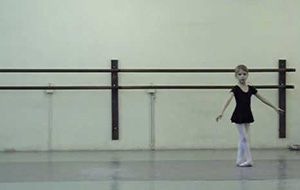 As children, parents and carers spend lots of time and money committing to dance lessons, even when they take joy from watching rather than doing. Taking children to dancing lessons requires energy and time, not to mention additional funds for competitions, costumes and extra performances. For a child, it is not until later that they see dance lessons in the same way, as an investment. Only then do they see that time, money and energy go to waste when they do not make the most of their dance lessons.
As children, parents and carers spend lots of time and money committing to dance lessons, even when they take joy from watching rather than doing. Taking children to dancing lessons requires energy and time, not to mention additional funds for competitions, costumes and extra performances. For a child, it is not until later that they see dance lessons in the same way, as an investment. Only then do they see that time, money and energy go to waste when they do not make the most of their dance lessons.
It is understandable that every dancer experiences a rut in their training, where they may not want to attend classes or feel they are not improving at the rate they should be. Despite this, it is not the dancers that stretch the most, sweat more or practice at home at all hours that necessarily get the most out of their dance classes either. The correct mental attitude is hugely important in dance training, to understand the purpose of dance for yourself and how to experience it in the best possible way.
When dancers become older, their adult freedom equates to a similar responsibility for themselves, be it getting themselves to classes, paying for their own training or beginning to assist with the teaching at the local dance studio. With these aspects comes heightened responsibility, for learning, fuelling and directing your dancing. It goes without saying that dancers must therefore arrive early and prepared for class, being focused and dedicated to the class, taking and applying corrections that are given to the class and spending time on the parts that need the most improvement, even if that means going back to basics.
Making mistakes is a large part of dance training; it will mean you will discover something new about the dancing body, through listening, watching, or error, even if this feels uncomfortable. Don’t forget to enjoy the process and thank your teachers for giving you the tools to better yourself and work hard in each class you take.
Dance-inspired Fit
 There are many dance-inspired fitness methods on the market today, from fitness trainers who used to be dancers to those who use dance as a means to remaining happy and healthy, whilst not having a dance background. Aerobics and Zumba classes still have their place, but these are now two of many different options for class participants. Workouts of these kind offer a combination of dance, fitness and wellbeing, and there is truly something to suit everyone, be it at sports centres or the local dance studio.
There are many dance-inspired fitness methods on the market today, from fitness trainers who used to be dancers to those who use dance as a means to remaining happy and healthy, whilst not having a dance background. Aerobics and Zumba classes still have their place, but these are now two of many different options for class participants. Workouts of these kind offer a combination of dance, fitness and wellbeing, and there is truly something to suit everyone, be it at sports centres or the local dance studio.
Today dance-inspired fitness – such as ballet-inspired workouts, dance cardio and toning barre classes – use dancers’ graceful and athletic bodies as a start point, aiming to emulate the idea of dance and being a dancer, rather than aspiring to lose weight or tone up. Strength, lengthening and athleticism can be just two focuses in classes of this kind, aiding existing fitness regimes for both non-dancers and dancers alike. Equally, classes such as HIIT (high intensity interval training), yoga and Zumba can be offered at dance studios that may have previously only offered technique classes.
Barre-style workouts can be used for physical as well as mental fitness benefits. They usually use the body’s own weight to gain lean muscle and a balanced mindset, where the focus is purely on the own body. Many may combine barre, Pilates and dance, and may even incorporate hand weights to aid the body’s training. Mixing up the body’s fitness routine – whether it is from a dance or fitness perspective – continues to challenge the body, and help participants find both energy and strength in the change in fitness activity.
Dance and fitness of course go hand in hand, so trying something different can renew your passion for the reason behind the workout, offering a range of benefits for both body and mind.
